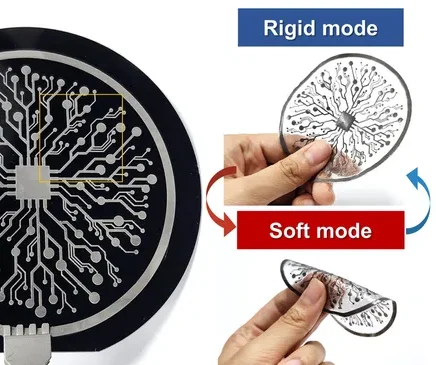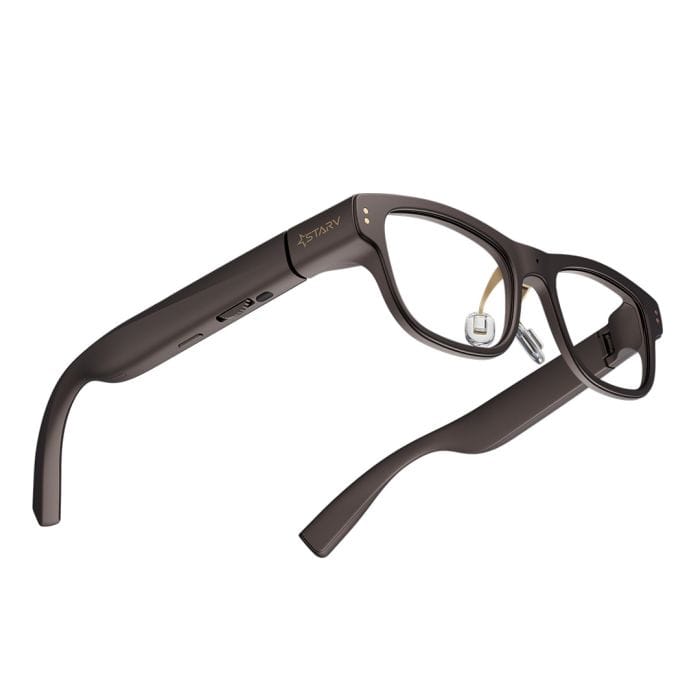Introduction: From Science Fiction to Scientific Reality
What if your smartphone case could change color like a chameleon? What if your smartwatch strap could shift its texture to notify you of a message—without a sound or vibration? These once-fantastical ideas are becoming real thanks to a groundbreaking innovation: shape-shifting electronic ink.
A team of interdisciplinary scientists has engineered a smart ink that not only changes color, but also morphs its surface and structure in real time. This development marks a pivotal shift in how we design future electronics—not just as rigid screens or devices, but as dynamic, morphing interfaces that adapt physically to our needs.
What Exactly Is Shape-Shifting Electronic Ink?
Shape-shifting electronic ink is a novel class of electro-responsive material that combines the properties of flexible electronics, photonic nanostructures, and elastomeric substrates. In simple terms, it’s a thin film that changes how it looks and feels when an electric field is applied.
Unlike traditional inks that only display static color, or even electronic paper (e-paper) that changes grayscale levels, this new ink features three major capabilities:
- Color Transformation – Full-spectrum color shifts via light scattering control
- Texture Morphing – Real-time adjustment of surface topography (bumps, ridges, etc.)
- Programmable Memory – Maintains its state without constant power input
How It Works: The Science Behind the Shift
The core of this innovation lies in a layered smart material system:
- Elastomer Matrix: A stretchable base material acts as the canvas.
- Electroactive Polymers and Nanoparticles: These respond to voltage by expanding, contracting, or rotating.
- Photonic Crystals: Nanostructures that interact with light at specific wavelengths to control color.
When voltage is applied, electrostatic forces cause the nanostructures to reorient or deform, altering both the reflective color and surface geometry. This change is reversible, rapid, and requires minimal power, making it ideal for battery-powered or passive devices.
Dr. Lin Zhao, lead researcher from the Advanced Materials Institute, explains:
“We are essentially manipulating how light interacts with matter at the micro-level to achieve dynamic visual and tactile output. It’s like programmable skin.”
Real-World Applications: From Fashion to Spacecraft
The potential uses of shape-shifting electronic ink are vast, ranging across industries and disciplines. Here’s how different sectors could leverage this smart material:
| Industry | Potential Application | Impact |
|---|---|---|
| Consumer Tech | Smartphone backs and cases that change color and texture | Custom personalization, haptic alerts |
| Wearable Fashion | Clothes that respond to temperature, mood, or light | Sustainable fashion, dynamic styling |
| Healthcare | Smart bandages that indicate infection or inflammation | Early diagnosis and wound care monitoring |
| Military | Adaptive camouflage uniforms that mimic surroundings | Stealth and protection in combat zones |
| Automotive | Car interiors that change texture and mood lighting | Sensory driving experiences |
| Space Exploration | Space suits or surfaces that adapt to radiation or temperature | Enhanced astronaut safety |
A Step Toward Bio-Inspired Interfaces
This breakthrough closely mimics the biological camouflage mechanisms of animals like cuttlefish and octopuses, which use chromatophores and muscular hydrostats to alter their appearance. Researchers drew inspiration from these creatures to replicate similar effects using synthetic materials.
This biomimicry opens doors to emotion-sensitive devices, where surfaces could visually react to voice tone or stress levels, making future interfaces more intuitive and responsive.
Technical Advantages: Why It Stands Out
- ✅ Ultra-Thin & Lightweight – Suitable for wearables, foldables, and flexible screens
- ✅ Low Energy Consumption – No need for backlighting or continuous power
- ✅ Scalable Design – Potential for large-scale printing on textiles or polymers
- ✅ Color + Texture Sync – Multi-modal feedback for richer user interaction
Unlike traditional displays, this ink provides multi-sensory output, combining visual, tactile, and even thermal cues in a single surface.
Challenges to Overcome
Despite its promise, this technology isn’t yet ready for mass commercialization. Here are a few roadblocks that scientists and engineers are working to address:
- Durability: The repeated mechanical deformation can stress materials over time.
- Response Time: While fast, further optimization is needed for real-time applications like video rendering.
- Environmental Stability: Resistance to water, UV, and extreme temperatures is still under evaluation.
- Manufacturing Cost: Producing these inks at scale with consistent quality is expensive.
To combat these, researchers are exploring nanoimprint lithography and self-assembling polymer structures to reduce production costs and enhance reliability.
Future Outlook: What Comes Next?
In the next few years, we could see shape-shifting electronic ink in consumer products like:
- E-readers with color-changing back panels
- Smart yoga mats that shift texture based on balance
- Mood-responsive phone grips or cases
- Clothing that adapts to environmental feedback
Eventually, this tech could merge with AI-powered sensors, enabling fully adaptive systems that change autonomously—like a car seat that reshapes based on your posture or a wall panel that becomes a screen when touched.
Final Thoughts: A Paradigm Shift in Human-Device Interaction
Shape-shifting electronic ink challenges the notion of static interfaces. It redefines how we think of surfaces—not just as passive shells, but as living components of a system that see, feel, and respond.
In a world increasingly filled with screens and sensors, this innovation brings us closer to a post-display era, where function and form merge, and technology feels as natural and adaptable as skin.
As the material continues to evolve, one thing is clear: the future isn’t just flexible—it’s shape-shifting.
If you enjoyed this article, don’t miss our previous posts packed with tech insights and reviews—check them out on our website!



